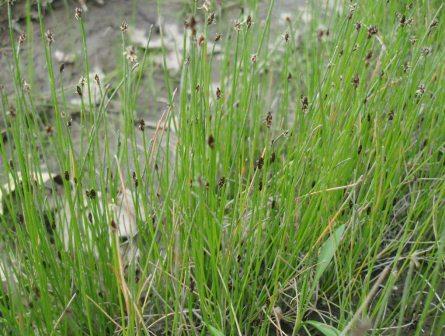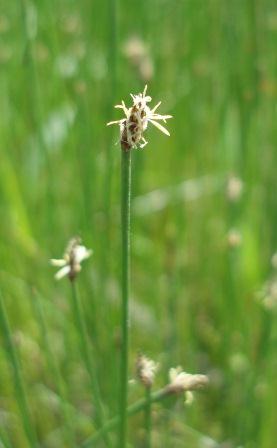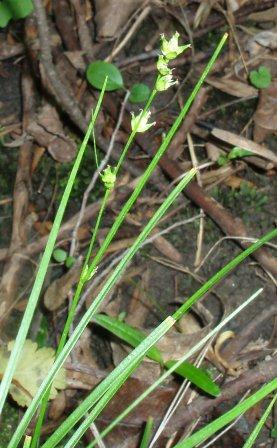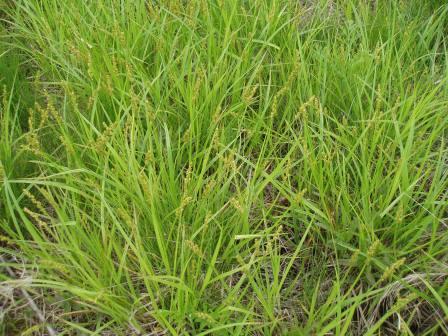by Carl Strang
Many recent additions to the Mayslake Forest Preserve species list have come from my focus on learning about sedges, grasses and rushes. I have found two species of spike rush on the preserve. Most abundant is the red-rooted spike rush.

This little plant grows in dense mats at the edges of Mayslake’s marshes and lakes, and in other wet places.
In one spot I found a second species, taller and more robust.

Known as the marsh spike rush, this one fittingly was at a marsh edge, in a patch surrounded by the previous species.
If plants can be cute, these spike rushes fit the bill. The cutest sedge to date has the charming name curly-styled wood sedge.
The little flower clusters are only an eighth of an inch in diameter.

You have to have a magnifying glass or microscope to appreciate this plant’s name. The style is a part of the tiny female flower.
I was interested in the plants growing in a little depression where I found abundant meadow katydids last summer. One dominant plant there
keyed to the common fox sedge.
It is so much bigger and different looking from the curly-styled wood sedge that it is surprising that both are in the same genus.

And yet, both belong to the group of Carex sedges in which male and female flowers are combined in the flower clusters.
Soon I will be expanding my study to the grasses, as many are on the verge of flowering. One that is blooming already is the meadow foxtail.
The preserve plant list already has hundreds of species, and I have a long way to go.


